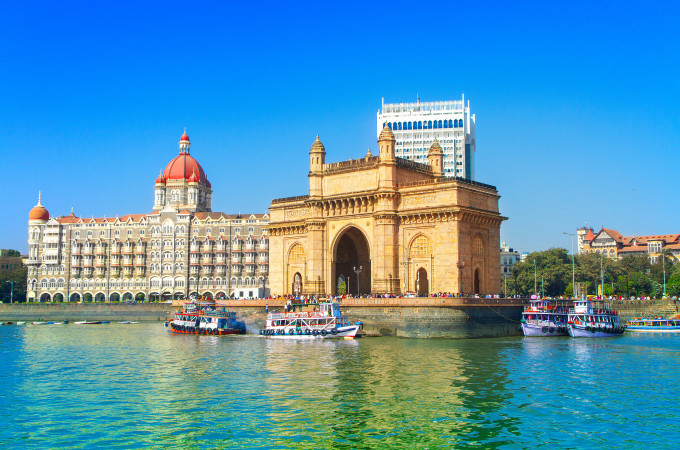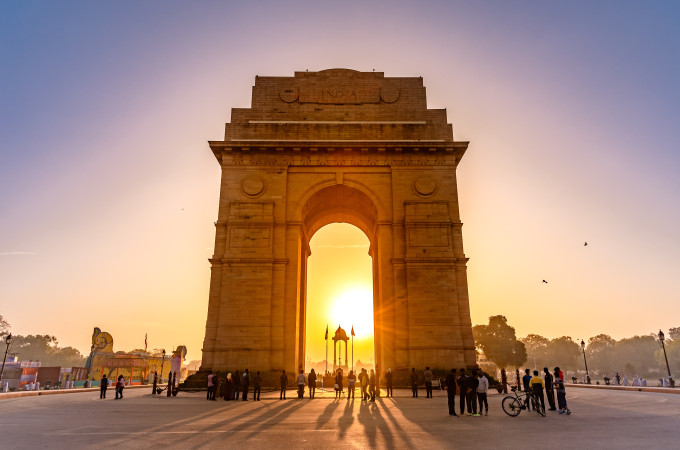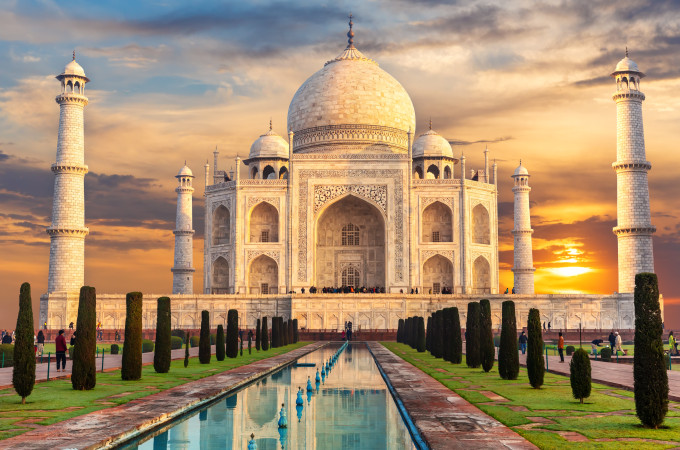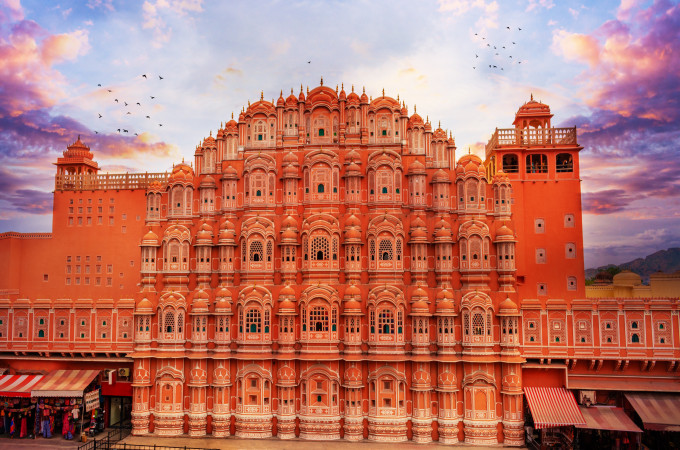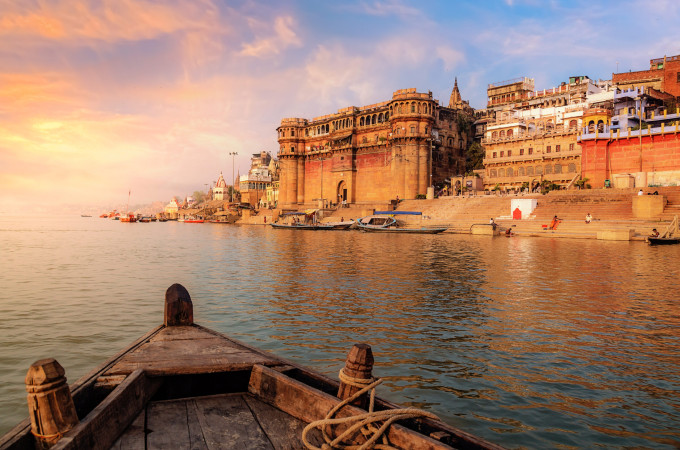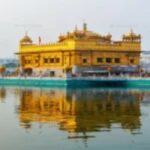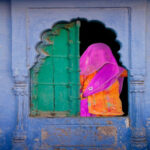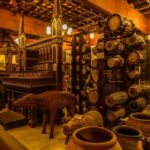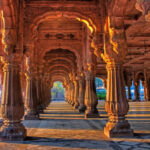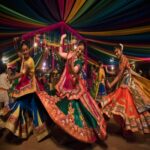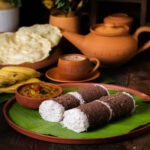India is a vast subcontinent of varied landscapes, geographies, seasonal weather patterns and topographies.
India can be an all-year-round travel destination but knowing where to go in India in a certain month or time of the year is crucially important.
In general, the best time of the year to visit India is during the winter (November to February).
But do not let the word “winter” alarm you. The Indian winter is benign and not as wet, dark, and gloomy like UK. The skies are clearer and the sunshine is very balmy and soothing, comparable to a pleasant summer day in Europe.
Find out more about what you should expect in terms of weather when you travel to India.
Here is our detailed breakdown of various seasons in India and the distinct attractions they offer.
Visiting India in the Winter : A Splendid Respite

Winter in India (October – March) brings a much-awaited escape from the sweltering heat and humidity of the summer and is considered the peak tourist season in India.
During this time of the year, the weather is pleasant and cool, and the skies are usually clear in most of the mainstream popular regions of India.
The rain tends to keep away and the weather is perfect for outdoors activities. Many of the popular festive events like cultural celebrations, festivals, and fairs are held during this time of the year.
These months are the best time of the year to visit popular tourist destinations like Delhi, Agra (Taj Mahal), Rajasthan, Mumbai, Kolkata, and Kerala. It is also a good time to go on a wildlife adventure or Tiger Safari in a national park.
NOTE: Bear in mind that it is also the peak tourist season in India, and top attractions like the Taj Mahal, Hampi, Ajanta & Ellora (Maharashtra), Khajuraho (Madhya Pradesh), Jaipur, Kerala, and Goa can get crowded and the prices of accommodations and guided tours may be higher.
Visiting India in the Summer : Sweaty Monsoon Blues

Summer in India begins in April and stretches on until September. The weather is quite hot and dry from April till June and the end of June sees the arrival of monsoon in most parts of the country.
July, August, and September can, therefore, be quite wet, hot, and humid due to the monsoon.
The mercury during this time of the year ranges from 80° F to 105 °F with sweltering heat and sweaty humidity. These months are challenging for outdoor travel and sightseeing as the constant heat and sweat mount a daunting challenge to get around in most of the low-lying plains of India.
But worry not: there are options, still.
If you are into wildlife, tiger spotting the Indian summer is the best time to go on exhilarating wildlife safaris in the 106 national parks, wildlife sanctuaries, and reserves that dot the length and breadth of the country.
The dry season also results in water scarcity and many predators like the Royal Bengal Tigers, lions, and leopards which are otherwise masters of disguise and camouflage tend to congregate around water holes, lakes, and rivers.
The summer is also a time to enjoy a relaxing hill station holiday. Traditionally, Indians from the low-lying metropolitan cities of India flock to the idyllic valleys in the Himalayas to escape the heat and humidity of the summers.
We recommend the “Paradise on Earth” Kashmir (Gulmarg, Pahalgam, Srinagar), Ladakh, Himachal Pradesh (Dharamshala, Manali, Shimla), Uttarakhand (Nainital, Mussoorie, Auli), West Bengal (Darjeeling) and Sikkim (Gangtok).
If you happen to be visiting the south of India during the summer, there are numerous scenic and pleasant options in the southern region as well.
We particularly recommend the Keralan gem, Munnar, which is famous for its breathtakingly beautiful lush green scenery, misty mountains, cascading tea gardens, and spice & tea plantation tours. Other options are Ooty and Kodaikanal in Tamil Nadu and Coorg (Kodagu) in Karnataka.
Visiting India in the Spring : Blossoms and Bliss

(FEBRUARY – MARCH – APRIL)
Spring is a time of celebration, festivity and joy.
It is a wonderful time of the year to be in India. Not only is the spring great for sightseeing, but the cultural extravaganza and galas on offer are exciting.
This brief intermission between winter and a prolonged summer brings with it blossoming flowers, mild temperatures, balmy sunshine, chirping birds and lots of cultural merrymaking.
Vasant Panchami, the religious and cultural festival famous for kite flying across the country across the country falls on the 14th of February and is a great time to experience festive extravaganza in North India.
Many of India’s other famous festivals like Holi (the festival of colors, Hanuman Jayanti, Baisakhi and Gudi Padwa are celebrated during these months.
This is a great time to visit the plains of North India (Rajasthan/Delhi/Agra region) and also charming landscape of Kerala and the colossal temples of Tamil Nadu.
Visiting India in the Autumn

Autumn can set in different weeks in different parts of India, but in general, these months are considered the fall season in India, when the prolonged scorching summer finally ebbs and temperatures fall drastically.
Autumn follows the monsoon season and is characterized by lower temperatures, cooler weather, clear skies, and falling leaves.
It is also a time of the year when many traditional festivals like Diwali (the Festival of Lights), Durga Puja Navratri, and Dussehra are held. It is also a good time to go on a wildlife safari as the animals pegged back by the rains finally come out of their hideouts and become more active.
Is There a Bad Time to Visit India and Other Troubling Questions?
As explained earlier, India is an all-year-round tourist destination.
This means that you can book a ticket and get on a plane to pretty much any month of the year.
Given that India is not your average run-of-the-mill country with a bunch of touristy destinations, but a vast kaleidoscope of a continent with a stunning variance of sights, sounds and attractions, there will always be suitable places for you to visit.
Where you want to go, how you want to get there, and what experience you want to treat yourself to, however, are propositions that depend entirely on our preferences, style, budget and disposition.
But here is what you should know.
- If you cannot stand the heat, you are better off avoiding popular sites like Varanasi, Delhi, Mumbai, Agra and Rajasthan during the peak summer and monsoon months.The Indian summer is not for everywhere, and the heat and sweat can get under your skin (literally and figuratively) if you are not cut out for it.
- Be prepared for a lot of frenetic activity, noise, and jostling around the super-popular landmarks during the peak tourist season in December and January.
- If you value your privacy, comfort, and security and want best for yourself and your loved ones, invest in a private tour. Here is the thing: India is very affordable. Your dollars are likely to go a long way here.
- The tourism and hospitality industry caters to a wide range of budgets, styles and preferences.
- Traditional group tours to popular tourist circuits are quite affordable and relatively decent, but they tend to pigeonhole you to rigid itineraries and a limited range of destinations and tend to lump you together with a group of strangers you might not want to be around with.
This is why investing in a private tour operated by a reputable tour operator is always a great idea, with flexible itineraries suited to your choice, and chosen accommodations catered to your style, you are likely to make the most out of your experience and have priceless peace of mind that traditional group tours fall short of providing you.
FREQUENTLY ASKED QUESTIONS
Winter or summer? What is the better season to visit India in?
That depends on the destinations you want to visit and the attractions you want to experience.
In general, if you want to visit the top attractions of India like the Taj Mahal, Delhi’s Red Fort, Rajasthan (Jaipur, Udaipur, Jaisalmer), Mumbai, Khajuraho Temples (Madhya Pradesh), Hampi (Karnataka) and Varanasi, you are better off doing it in the winter (from October to Mid-March) when the weather is cooler and pleasant.
These attractions are located in low-lying plains or arid dry terrains. Their winters are mild, balmy, and exotic, whereas summers in these parts can get quite intense with scorching heat, humidity and temperatures above 100 °F.
But if you want to enjoy a relaxing hill stations holiday or go on mountain hiking, off-roading or nature trail adventures, the summer (April-September) is a great time to visit the Himalayan region.
April-June is also a good time to go on tiger spotting safaris as animals congregate around water bodies, lakes, and holes to escape the heat and keep themselves hydrated.
This makes it easier to spot them.
Please, note that all national parks in India are closed during the monsoon season from July 1st to 30th September.
What is the best time to visit the Taj Mahal?
The best time of the year to visit the Taj Mahal is from October to the End of March.
The weather during these months in Agra is ideal for travel. We particularly recommend witnessing a sunrise at the Taj Mahal when the first rays of the sun light up the translucent white marble of the Taj.
Another unforgettable Taj Mahal experience is a night tour on a moonlit night.
Every month for 5 days (the full moon night, two nights preceding and two nights after the full moon night) 8 batches of 50 people each are allowed to witness the Taj Mahal at night in 30-min-long exclusive tours, making for a surreal and poetic visual experience
Please bear in mind that the Taj Mahal is closed to visitors on Fridays.
What is the best time to visit Delhi and is it worth it?
The nation’s capital offers iconic landmarks like the India Gate, the Red Fort, Jama Masjid, Qutub Minar, Chandni Chowk, Akshardham, and the Lotus Temple.
Delhi is worth a visit for its heritage sites, museums, and culinary delights.
The best months to visit are from October to March.
What is the best time of the year to visit Kerala and the rest of South India?
Bear in mind that the south of India is a sub-tropical region that is at the mercy of the monsoon seasonal wind systems of the India ocean.
April and May tend to be quite hot and the monsoon sets in from June to September. Best time to visit Kerala and the rest of South India therefore is from October to February.
However, in the summer the idyllic hill stations of Munnar, Wayanad and Thekkady offer a pleasant respite from the scorching heat of the lowlands.
These hill stations are ideal for a holiday amid a misty mountainous scenery that is a delight to watch. You can also go on spice, tea and coffee plantation tours at these hill stations during these months.
What is the best time to visit Varanasi?
Varanasi gets visitors and devotees by the tens of thousands daily all year round. It is generally quite crowded around the time of religious festivals and celebrations.
The best time to visit the Uttar Pradesh region where this ancient holy city is located is from October to March.
I have always wanted to go visit the Himalayas to hike its mountains and bike through its passes à la the ancient caravans of the Silk Road. When should I go?
March to July is the best time to visit the Himalayan region. The weather during these months is pleasant and the skies are clear making it ideal for long walks and treks in the mountains.
We recommend Manali and Shimla in Himachal Pradesh, Gulmarg in Jammu and Kashmir, Leh in the Ladakh region, Darjeeling in West Bengal and Auli in Uttarakhand.
We also recommend that you check yourself into a destination spa in Rishikesh or Kashmir and treat yourself to a pampering experience.
Winters (October-February) in the Himalayas are intense with blistering chilly winds and rough weather. Some regions may be cut off from the rest of the country due to land sliding and snow. But it is a good time for skiing and snow adventures.
I want to enjoy a picture-perfect tropical beach holiday in India. What time of the year should I go and where?
In the northern hemisphere, the summer is time of the year to hit the beaches. In India, it is different.
In general, November to March best time for a serene beach holiday in India. Goa is India’s primary beach destination and its beaches are thronged by tourists during these months.
But if you prefer a less touristy and dream-like tropical paradise with white sand beaches and turquoise clear waters, we recommend the Andaman and Nicobar Islands located on the confluence of the Bay of Bengal and Andaman Sea in the Indian Ocean.
“God’s Own Country” Kerala is also a great option with great beaches like Marari and Varakala, serene backwaters like Alleppey and posh Ayurveda-inspired spa resorts. Other “hidden gems” alternatives to these destinations are Karnataka (Gokarna) and Odisha (Puri).
I have always wanted to visit Rajasthan. Should I visit during my summer break?
Rajasthan is located on the fringes of India’s greatest and largest desert, Thar. The terrain is arid, rugged and dry.
Therefore, summer is not a good time to go because the mercury rises above 100° F.
Best time therefore is from November to March when the weather is cool and dry with clear blue skies.
It is the perfect time for a camel safari in the desert, “Sand Duning” jeep adventures in the Sam Sand Dunes and wildlife adventures at the home of the Royal Bengal Tiger, the Ranthambore National Park.
I want to take my family on a Golden Triangle tour (Agra, Delhi, Jaipur). What is the best month to visit?
Comprising the trio of Delhi, Agra and Jaipur, the Golden Triangle is the most popular circuit for international tourists visiting India and is the ideal option for a family vacation in India.
The cities are home to some of India’s greatest landmarks like the Taj Mahal, Red Fort, City Palace Jaipur, Amer Fort, Qutab Minar and Jama Masjid.
Best time to visit the region is from October to March. Mercury ranges from 65 °F to 78 °F.
 Skip to main content
Skip to footer
Skip to main content
Skip to footer
